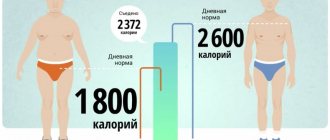There is an opinion that you can lose weight if you walk 10 thousand steps every day and do nothing else. We'll tell you whether walking will really help you become slimmer, how much you really need to walk, and what types of walking there are.
Proven benefits of walking: improves joint mobility, reduces stress levels, helps you spend more energy. But losing weight is not so simple Gif by Alegria
Where did this figure come from?
Photo: unsplash.com
Initially, the idea that a person needed to walk 10,000 steps a day to be healthy had no scientific support. This figure was invented by Japanese marketers in the 1970s shortly before the Sapporo Olympics. Then one sports company released the world's first pedometers, the maximum value of which was set to exactly this figure - absolutely randomly. This mark became so popular that millions of people around the world began to adhere to it.
And only later did scientists prove that people who cover such a distance every day reduce the risk of cardiovascular diseases and increase muscle tone. The norm is considered to be from 10 to 12 thousand steps, but only if your body is ready for such stress. If you lead a sedentary lifestyle, but want to change it, do it gradually. Do not set insurmountable distances for yourself, but increase them gradually - by 1000 steps per week. To avoid joint problems, choose light shoes with comfortable lasts and don’t be lazy to do exercises in the morning - it will help you warm up and prepare your body for an active day.
Walking alone is not enough for weight loss, but it has many benefits
Walking improves muscle tone and joint mobility, prevents bone loss and reduces the risk of fractures, is useful for the prevention and relief of symptoms of Alzheimer's disease and dementia, and has a positive effect on eye health, respiratory, cardiovascular and nervous systems.
Daily walks can improve your overall mental state, reduce stress levels and relieve fatigue.
When you walk, you expend more energy. However, only walking without caring about a healthy diet, sleep and rest patterns, and without other various loads will not lead to weight loss.
10,000 steps a day?
Photo: unsplash.com
It is impossible to say exactly how many calories are burned when walking 10,000 steps - it depends on many factors. Firstly, on the pace and terrain: if you walk uphill at a brisk pace, you can get rid of about 7 calories in a minute. But when descending, the figure will immediately drop by half - to 3.5.
It also depends on genetics and the general fitness of the body. It is believed that muscles that are accustomed to daily loads - even minimal ones - work more efficiently, produce more heat and burn calories more actively. Therefore, it is better to exercise regularly than to try to make up for all the missed classes every six months and drive the body into a state of stress. And, by the way, the myth that overweight people burn more calories when walking than thin people does not have any scientific basis - the process is approximately the same for everyone.
There are different types of walking - choose depending on your goal and preferences
There are several types of walking. Each has its own purpose and advantages.
Recreational walking
Walking is one of the few available activities for some older people, those who are highly obese, or those who have contraindications to more intense exercise.
The purpose of such walking is to make walks regular and dose the load only in duration, focusing on the recommended level of physical activity.
While walking, your heart rate should be in the first pulse zone: in this mode you can talk calmly.
Intensive walking
Intensive walking is a type of moderate aerobic exercise. The recommended heart rate zone is the second.
During such walking, the respiratory and cardiovascular systems are actively trained, the muscles of the lower leg and pelvis, and the ankle joint work. And if you walk over rough terrain, for example, in a forest or in a park, other muscle groups may also be involved.
For an hour of intense walking, a person weighing about 70 kg spends an average of 300 kcal.
Trekking or Nordic walking
Nordic walking combines aerobic and strength training. By pushing off with poles, you tense your muscles and thereby stimulate muscle development and increase endurance.
Nordic walking at a speed of 6.5 km/h can consume up to 400 kcal/hour on average.
Walking on a treadmill
The advantage of walking on a treadmill is the ability to adjust the speed and incline of the belt, if your treadmill has such functionality.
This is a suitable option when it’s snowing or raining outside or you just don’t want to go out. You can also combine it with listening to music or your favorite TV series.
Running-walking
Running-walking is alternating a slow jog of 20–30 meters with walking of 150–200 meters.
The number of alternations increases with training, and the intervals can vary in duration and intensity. This way you can make your workout more varied and adapt it to your preferences and goals.
Energy consumption will depend on the selected mode. If you want to prepare for running training, running-walking will help you do this.
Walking is a simple, safe, moderate-intensity physical activity that can be easily incorporated into your daily routine. Ten thousand steps a day is not a scientifically proven norm, but it will help you meet your daily movement guidelines.
Regular walking has many health benefits and can contribute to weight and body fat loss, but the best results come from combining physical activity with healthy changes in diet and other aspects of lifestyle.
Author: Anna Nesterova, head of scientific information and training at the School of the Ideal Body #sekta
Literature
1. Paul WILLIAMS | Lawrence Berkeley National Laboratory, CA | LBL | Life Sciences Division 2. Walking versus running for hypertension, cholesterol, and diabetes mellitus risk reduction, 2013 3. How Walking Can Help You Lose Weight and Belly Fat Helen West, RD (UK), 2022 4. Eye Health: 4 Natural Ways To Maintain Good Vision Medical Daily, Lizette Borreli, 2013 5. Why is Walking the Most Popular Form of Exercise?, 2022 6. Walking Works, Walking fot health 7. Osteoporosis, Arthritis Foundation, Osteoporosis 8. Frequent, Brisk Walks May Aid Those With Early Alzheimer's (Published 2017), The New York Times, Gretchen Reynolds, 2022 9. Walking But Not Losing Weight: Mistakes and Fixes, Wendy Bumgardner, 2022 10. Can walking really help make you lose weight?, 2019 11. Why walking ( probably) isn't enough to make you lose weight, Stuart March, 2016 12. Medical myths: do we need to take 10,000 steps every day?, BBC news / Russian Service, 2022 13. 10 steps to a healthy heart, Physical activity, M .YU. Pozdnyakov 14. WHO recommendations on physical activity and sedentary lifestyle
Benefits of walking
- walking has a positive effect on the respiratory system, because the lungs are better filled with oxygen and work more actively, which means their volume increases
- This is an excellent workout for the cardiovascular system. During movement, the heart begins to contract more frequently and actively, the vessels fill with blood, and their tone increases
- walking is the prevention of diseases such as heart failure, heart attack, hypertension and others
- this is a great way to get rid of bad thoughts and relieve stress
and get a lot of positive emotions
- walking helps you lose weight because it helps burn fat deposits and also activates different muscle groups, including almost all the muscles of the legs and abdominal muscles
- while walking, the outflow of blood from the veins of the lower extremities improves, which reduces the risk of developing varicose veins, which many women face
- walking significantly improves blood supply to the pelvic organs, which is especially important for women, as it protects against gynecological diseases
— for men, walking ensures blood flow to the organs of the reproductive system, eliminates congestion, minimizes the risks of developing prostatitis and other diseases
- even a short walk can give a boost of energy and good mood, as well as increase activity and performance.
- walking is very useful for people whose profession is related to mental activity, as it is a good way to get distracted and give the brain a rest
- walking is good for digestion and speeds up metabolism
Is it possible to start with 10 thousand right away?
Only with an eye on health. If you can’t cover 8 km right away, then it’s better to reduce the load and add steps gradually. The main thing is to focus on your well-being.
Pavel Evdokimenko: “When you are young and healthy, you can start with 10 thousand even tomorrow. But if your knees are ruined, it's not very healthy. In this case, you need to start gradually.”
We talked to Wonder Woman: She did 3,000 squats and didn't kill her knees
How to walk correctly?
Pavel Evdokimenko: “The main point is that to achieve the maximum health-improving effect, you need to walk at a brisk pace.”
There are a few more important rules:
• it is best to overcome 10 thousand in one go. This way the body and cardiovascular system will receive the necessary load, and the muscles will warm up.
If you divide the route into segments with frequent breaks (walk a little to the stop, then to work, back in the evening, stop at the store on the way) - the benefits will be much less. But this option is also suitable if it is not possible to move 8 kilometers in a row.
• the technique works if you use it every day - without consistency it is almost useless;
• it is better to go on an empty stomach;
• you can’t slouch – when walking, your back should be straight, your shoulders should be spread to the sides, and your arms should be swinging freely;
• correct breathing – inhale through the nose, exhale through the mouth. There is no need to talk while walking - it will disrupt the rhythm.
"10 thousand steps" came from Japan
When it comes to getting fit and healthy, we are often reminded that we need to walk 10,000 steps a day. Achieving this goal may not be a pleasant experience, especially if we are busy with work and various obligations. By now, most of us know that 10k steps is the recommended goal to achieve, but where does that number actually come from?
The goal of 10,000 steps a day appears to have been set using a Yamasa Clock brand pedometer sold in Japan in 1965. The device was called "Manpo-kei", which translates as "10 thousand pedometer". It was a marketing gimmick for a device that seems to have become ingrained in the minds of people around the world as a daily step norm. It's even included in the daily activity goals of popular smartwatches like the Watch Fit.
Since then, scientists have studied the goal of 10 thousand steps per day. The fact that some studies have shown that this step goal improves heart health, mental health, and even reduces the risk of diabetes may go some way to explaining why we stick to this arbitrary number.
How many steps do you need to take to lose weight?
To calculate the number of steps and kilometers that you need to walk per day to lose weight, you need to know your current and desired weight, height, caloric content of food eaten and the basic one (which is consumed by the body in the complete absence of physical activity).
When walking in an hour, depending on weight, the following number of calories is burned:
| Speed (km/h) | Number of calories (kcal) burned per hour | ||||
| 90 kg | 80 kg | 70 kg | 60 kg | 50 | |
| 4 | 300 | 288 | 257 | 224 | 192 |
| 5 | 415 | 431 | 292 | 258 | 221 |
| 6 | 435 | 392 | 349 | 334 | 262 |
This table does not take into account age indicators. The older a person is, the less calories he burns, so it is harder to lose excess weight.
Fat has an energy value of 9000 kcal/kg. But a person cannot consist solely of fat mass; the lost weight will include muscles and part of the water, so the number 7700 is used for the calculation.
The average step is approximately 07-08 m, in which case a kilometer equals 1250 steps. If you go to work without rushing, the following indicators are achieved:
- in 1 hour a distance of about 5-6 km is covered;
- with 10,000 steps, a distance of 8 km is covered;
- You can walk 2000 steps in 15 minutes.
These figures are averages; the exact figures depend on the step width.
To count the number of steps, it is convenient to use a pedometer so as not to do the calculations manually.
Calculation of the number of steps per day
A person who moves at a speed of 5 km/h walks 5000 meters, or 8 thousand steps, in 60 minutes. The number of calories burned is determined according to the table depending on weight. Next, the daily norm is calculated.
For example, a person weighs 90 kg and needs to lose 10 kg. This means that he must spend 77 thousand kcal. If you consume 300 kcal per hour, you need to exercise for 233 hours. This means that you will need:
- 8 months when walking one hour a day;
- 4 months when walking 2 hours a day.
The load depends on the excess weight that needs to be lost:
- To lose 10 kg in a month, you need to take 2.5 million steps, 490 thousand per week, 70 thousand per day (that is, 9 hours of walking).
- To lose 20 kg in a month, you need to walk twice as much (18 hours a day).
- To lose 5 kg (lose 20 kg in 4 months), you need to walk every day for 4 hours and 30 minutes.
Such weight loss is achieved provided that the person does not change anything in his diet. But if you limit the amount of fast carbohydrates you consume, you can achieve results much earlier.
Is it possible to lose weight if you walk 5 km a day?
If you do not change your diet and only engage in walking, the approximate weight loss per month will be 1 kg (assuming you walk 5 km a day, which corresponds to 8 thousand steps for women and 7-7.5 for men). In addition, you can improve your health.
For people who have a lot of excess weight, this method is not suitable. Walking must be supplemented with other physical activity or dietary nutrition.
Lawless Heart
In the late 1960s, population health studies were conducted in Japan, during which they confirmed the beneficial properties of 10 thousand steps for residents of the country. But can this conclusion be extended to all of humanity? “The anthropometric data of a Japanese person is significantly smaller than that of a Caucasian person, so correlating them is like studying a pony and drawing conclusions for a horse,” says sports doctor Sergei Vasin . As for us, no special research on this topic, and therefore no precise recommendations in the health care of the EU, USA or Russia, has yet been made. True, for example, according to some French researchers, the daily norm for the average Caucasian can be from 5 thousand to 6 thousand steps. That is, for us the Japanese norm can be reduced by almost half.
Article on the topic
Running or walking? What to choose for your health This kind of activity is the norm and, according to experts from the EU, reduces the risk of cardiovascular diseases, diabetes and even cancer by 30-40%.
However, while discussing the optimal number of steps, it is important not to forget that in any case it is better to exceed the daily norm of movements than to underfulfill it. “We begin to burn carbohydrates only 20 minutes after the start of physical activity,” says nutritionist Albina Vasilyeva . “Only then does the body take in the ‘extra’ fats and at the same time release protective substances.”
But if you are overloaded with everyday worries and cannot yet allocate even 20 minutes for a continuous walk, then you should not dismiss the opportunity to gain motor norms in parts. This, of course, is much less effective, but certainly not useless.
“Training the heart muscle begins literally from the first second of movement,” says cardiologist Sergei Myasin . — Of course, the correct cardio load is measured, not too forced monotonous movements: calm walking, swimming, rowing. But short accelerations are also not at all useless. The only thing that is most harmful is the complete lack of movement.”
Question answer
What are the benefits of walking? 6 reasons to go for a walk Remember: walking is always better than a short trip on public transport (1-2 stops), using public transport is always preferable to traveling by private car, and taking the stairs is in any case better than taking the elevator. And if this gives you moral satisfaction, then under no circumstances give up the pedometer. Just don't get too hung up on the number of steps. Today we've walked less, tomorrow we've walked more - that's not important. It's important to get off the couch or get out of the car to walk!











